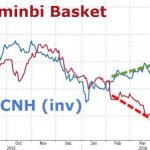As advanced economies struggle with stagnation, one monetary era is about to change. After a decade of massive easing, the US Fed is hiking rates and moving to reduce its massive $4.5 trillion balance sheet. There are no historical precedents but there will be global repercussions.
As the central banks of major advanced economies are pondering the shift from massive easing to gradual tightening, all other nations must adjust to these huge shifts, whatever their current status quo.
In China, the shift will begin as the People’s Bank of China (PBOC) is cultivating a tightening bias of its own, but selectively and cautiously. The Reserve Bank of India (RBI) recently kept its policy repo rate unchanged at 6.25%, as the lingering effects of the demonetization prevail, growth data is (temporarily) down, the monsoon seems to be on target and inflation remains low. In Southeast Asia, the shift will begin as many central banks are under pressure to curb rising prices.
In the Philippines, Bangko Sentral kept its benchmark interest rate at 3% in May. However, as inflation has climbed to 3.4%, the fastest since 2014, a rate hike may well follow. Bangko Sentral is no longer likely to permit further softening of the peso. And yet, rising global interest rates could further weaken the peso, adversely affecting capital flows to the Philippines and driving up inflation.
So what is to be expected?

Rate normalization and divergence
Before the Trump era, the Federal Reserve hoped to tighten monetary policy more often and aggressively than markets anticipated. However, since November, economic uncertainty and market volatility has fluctuated significantly.
In its May meeting, the Fed left its target range for federal funds rate steady at 0.75-1%, in line with market expectations. Currently, it is likely to climb to 1.3% by the year-end. Moreover, the Fed seems to hope to raise it to 3% by 2020.
In other major advanced economies, monetary stance is running behind that of the Fed. The European Central Bank (ECB), led by Mario Draghi, held its benchmark rate at 0% in April. As inflation is rising in the Eurozone, the ECB is understandably pondering the idea of moving toward tightening earlier than initially anticipated.












Leave A Comment